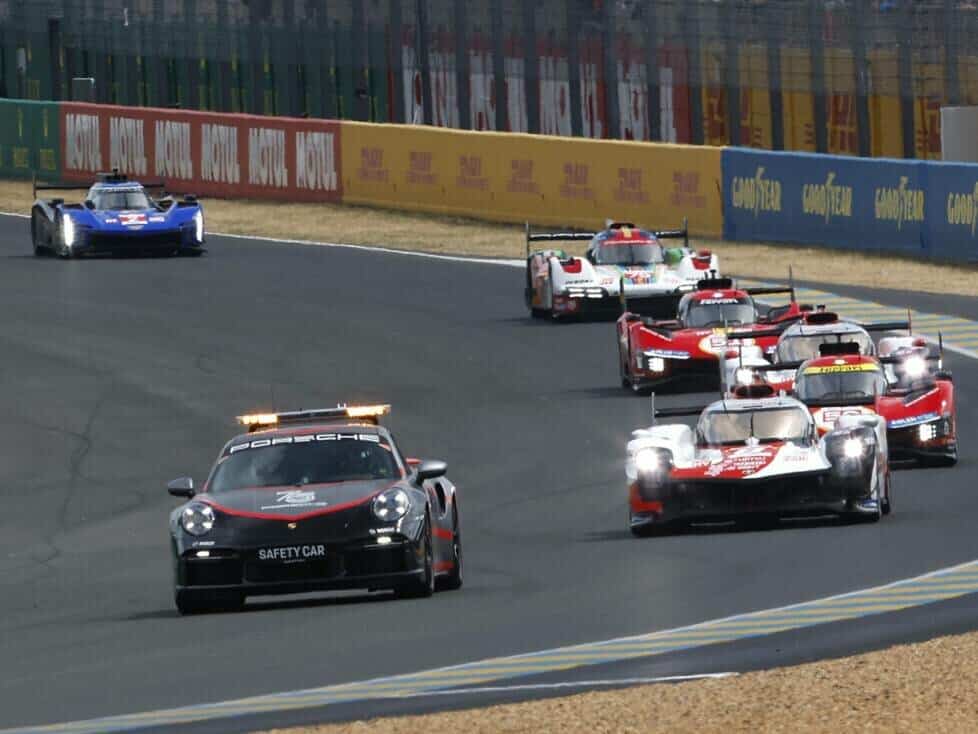One year after the controversial change, the SC procedures at the 24 Hours of Le Mans will be changed again – special rule for the last 60 minutes
The so-called “back drop” behind the safety car at the 24 Hours of Le Mans will be abolished in 2024. the SC procedure will be significantly revised. It now takes up a whole ten pages in the Sporting Regulations. There is also a special rule for the final hour of the race
The principle of bringing the entire field together in the first 23 hours of the race remains unchanged. The race will continue to start with three safety cars, which will be brought together behind a safety car once the danger has been eliminated.
The “pass around”, better known in US motorsport as the “wave-by”, also remains unaffected by the amendment. This means that vehicles driving behind the safety car in front of the leader of their class are allowed to lap back. Only the time-consuming sorting of the classes afterwards is no longer necessary.
In practice, this means that the gaps in the hypercar class will shrink enormously. However, a string of pearls like in the IMSA SportsCar Championship is not created at the restart because cars that are several laps behind form a buffer. The greater the gap before the SC, the more cars there tend to be between two hypercars. At the same time, the other classes are not torn apart
Controversial rule change 2023
The reform of the safety car rules in the run-up to the 100th edition of the 24 Hours of Le Mans in 2023 has been heavily criticized by purists and in the paddock alike. An advantage of three and a half minutes would be almost completely wiped out at Le Mans by an SC deployment, which would not be the case on normal-length circuits. There was talk of an “Americanization” of the race, which was not in keeping with the character of the 24 Hours of Le Mans.
The ACO has now responded to this with a special regulation, although this only applies to the last 60 minutes of the race. In order to prevent the race from being decided in a sprint, there will then be three safety cars, which will keep the gaps larger if they were already large beforehand.
The regulations were heavily revised by the ACO last year to prevent the smaller classes from being torn apart by the use of three safety cars. The GTE Pro class in particular was repeatedly torn apart because some cars still “caught” a safety car train.
Others that were only just behind were caught by the next safety car. They were at the front of the next train and, after the restart, were suddenly around 1:15 minutes behind the cars in front of them, even if they were only just behind them beforehand.
However, critics of the new system argued that the ACO did not want to miss out on the chance of a blockbuster finale for the TV broadcasters, which was totally inappropriate for the endurance classic. Especially as the regulations were changed at a time when the LMGTE Pro no longer existed and the LMP2 would no longer be as fiercely contested as before due to the already foreseeable end of the WEC.
At least the ACO is countering these rumors with its latest rule change. However, it remains the case that the gaps can theoretically be almost eliminated up to an hour before the end of the race if a safety car is sent onto the track before this marker expires.





